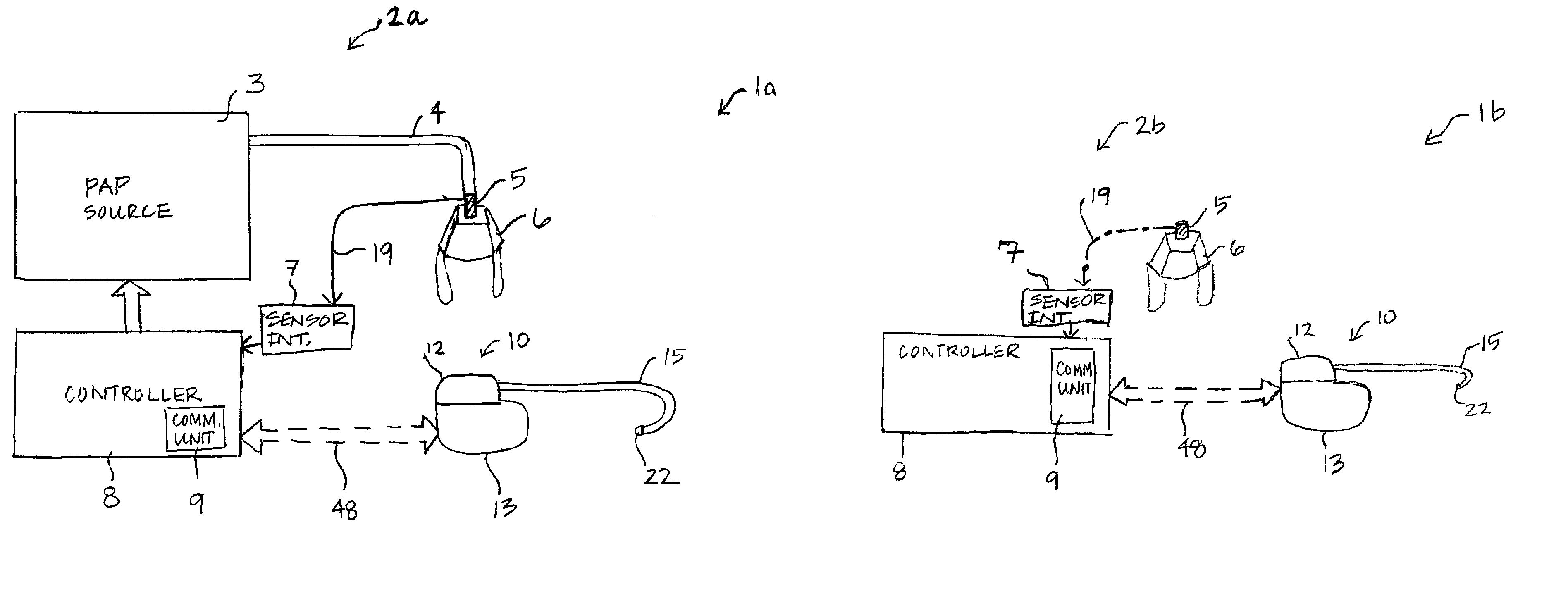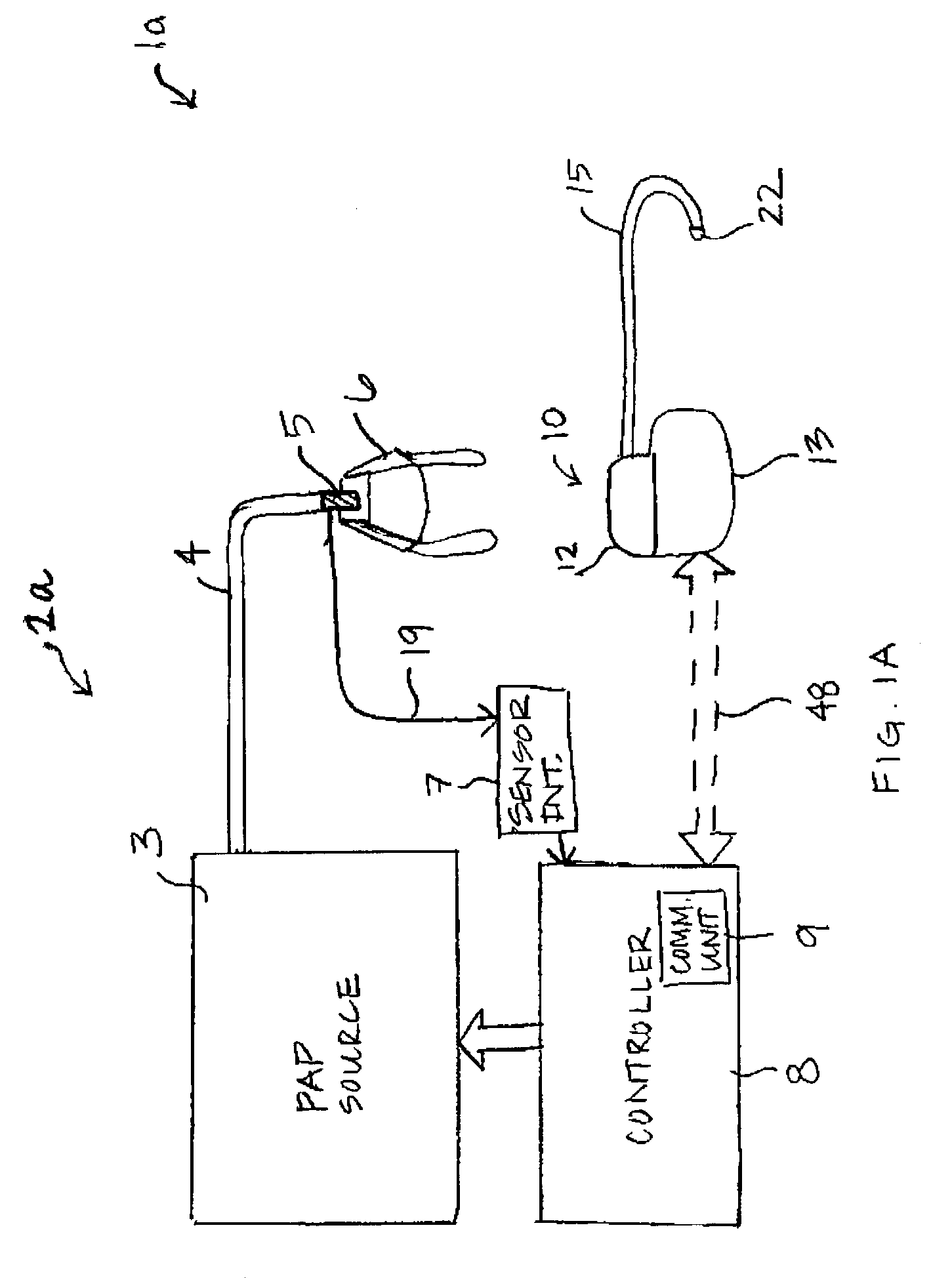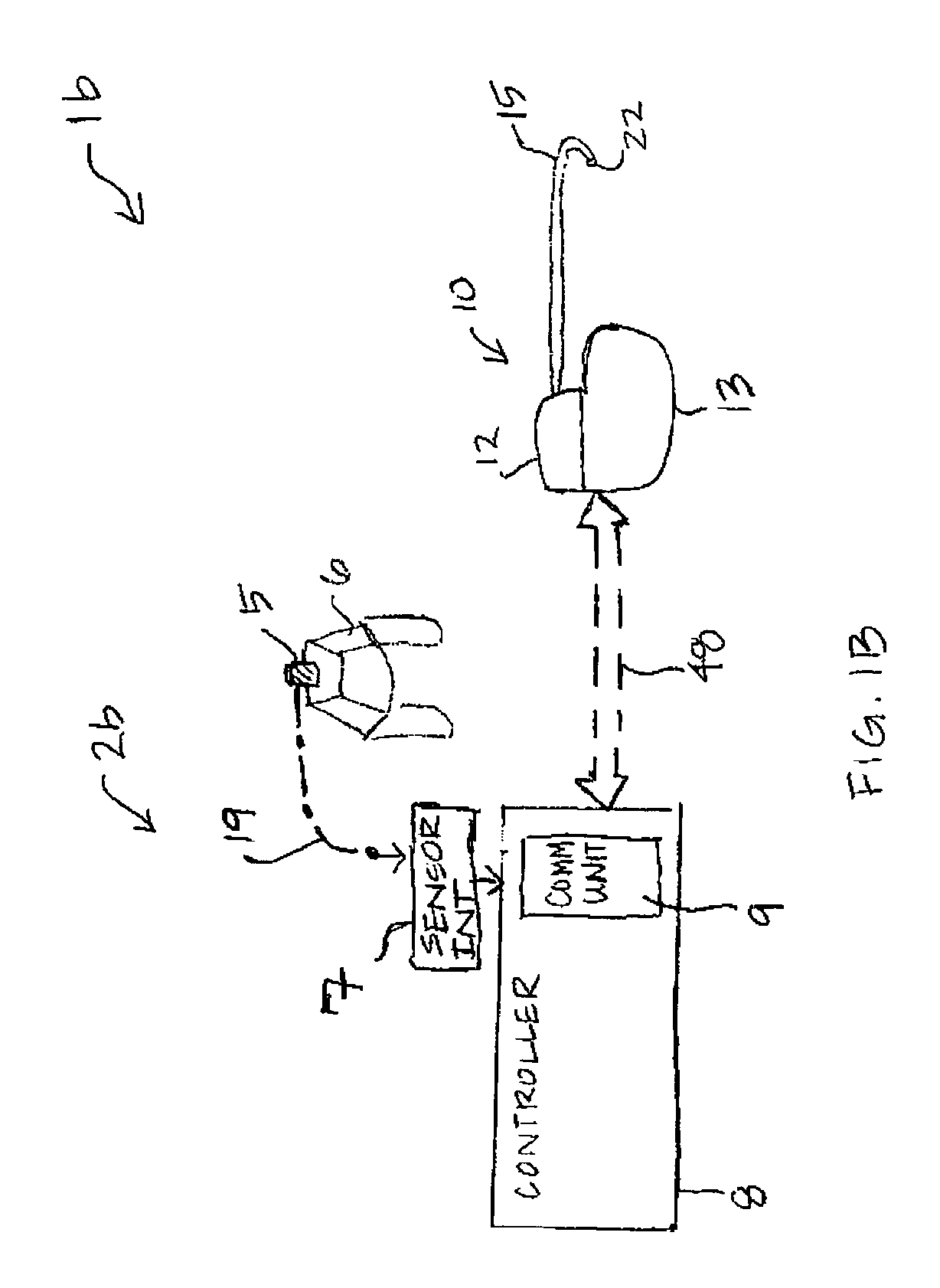System and method for automatically monitoring and delivering therapy for sleep-related disordered breathing
a technology of sleep disorder and automatic monitoring, applied in the field of system and method for monitoring and automatically delivering a therapy for sleep disordered breathing, can solve the problems of increasing morbidity risk, affecting patient lifestyle, and inability to screen large numbers of patients with intensive and costly approaches
- Summary
- Abstract
- Description
- Claims
- Application Information
AI Technical Summary
Benefits of technology
Problems solved by technology
Method used
Image
Examples
Embodiment Construction
[0023]FIG. 1A is a schematic diagram of a system provided by the present invention for monitoring for sleep-related disordered breathing and delivering a therapeutic intervention. The system, generally labeled as 1A, includes an external monitoring system 2A for monitoring respiration and an implantable medical device 10 for delivering a therapy for alleviating SRDB. The external monitoring system 2A, in this embodiment, is capable of delivering positive airway pressure for maintaining airway patency and is therefore referred to herein as an “automatic CPAP system”. Accordingly, external system 2A includes a positive airway source 3 connected to a patient mask 6 via an air hose 4. Sensor interface 7 receives input on signal line 19 from sensors 5 located in mask 6, or alternatively within air hose 4, and provides output to controller 8. Controller 8 is preferably a microprocessor based system, which may be a personal computer, equipped to receive digitized or analog data from sensor...
PUM
 Login to View More
Login to View More Abstract
Description
Claims
Application Information
 Login to View More
Login to View More - R&D
- Intellectual Property
- Life Sciences
- Materials
- Tech Scout
- Unparalleled Data Quality
- Higher Quality Content
- 60% Fewer Hallucinations
Browse by: Latest US Patents, China's latest patents, Technical Efficacy Thesaurus, Application Domain, Technology Topic, Popular Technical Reports.
© 2025 PatSnap. All rights reserved.Legal|Privacy policy|Modern Slavery Act Transparency Statement|Sitemap|About US| Contact US: help@patsnap.com



